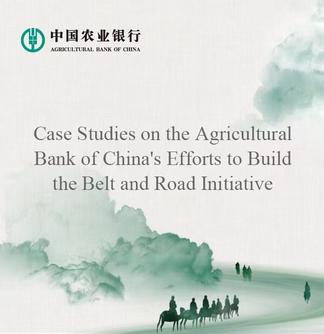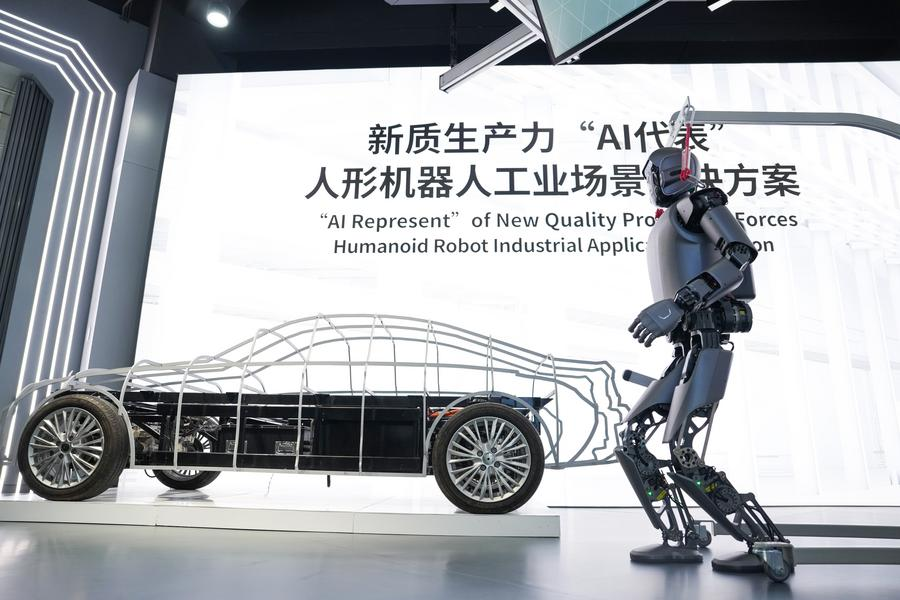A humanoid robot is displayed at Beijing Economic-Technological Development Area in Beijing, capital of China, June 17, 2025. (Xinhua/Zheng Huansong)
BEIJING, July 25 (Xinhua) -- China is successively unveiling its 2025 semi-annual report series, which showcases frequent breakthroughs in new consumption sectors, accelerated development of new industries, and remarkable vitality of new growth drivers. Multi-dimensional data confirms China's growing "newness quotient" and surging innovation vitality, which are fortifying the bedrock of confidence in the Chinese economy.
-- Booming new consumption spurs domestic demand and quality upgrade
From Ne Zha 2's record-shattering box office to the Labubu toy craze, from winter's "ice and snow" economic boom at the start of the year to the sizzling "cool" consumption surge in summer, and from village galas that ignite rural tourism to the Jiangsu Football City League spurring ticket-stub economy, these new consumption highlights proliferating in the first half of the year evidence the sustained unleashing of China's mega-sized market potential.
China's total retail sales of consumer goods reached 24.55 trillion yuan in the first half of the year, marking a 5 percent year-on-year increase. Overall, final consumption expenditure contributed 52 percent to China's economic growth in the first half of the year, becoming the primary driver behind China's economic growth.
Shen Jianguang, vice president of JD.com, stated that JD.com's big data analysis reveals several emerging consumption trends in China, such as health-focused spending, the rise of domestic brands, and growing senior consumer demand.
According to the latest data from China's State Taxation Administration, the silver economy demonstrated notable new developments in the first half of the year, including enriched elderly care services, accelerated product iteration for seniors, substantial untapped consumption potential, and digital empowerment initiatives.
Additionally, emotional consumption is emerging as a new growth driver in the consumer market. A report on interest-driven consumption trend for the first half of this year, jointly released by the shopping guide platform SMZDM and the Zhi-Tech Research, reveals that nearly 70 percent of surveyed individuals are willing to allocate a "flexible consumption budget" for happiness, with over 20 percent making indulgent purchases for joy.
The rapid expansion of instant retail is also driving growth in the consumer market. E-commerce platform data shows that instant retail sales experienced rapid growth during this year's "618" shopping festival.
With increased investment from e-commerce platforms such as JD.com, Meituan, Taobao Flash Sale, and Ele.me, the daily order volume of the entire instant retail sector has surged from an average of 100 million orders per day in May to the current 200 million orders per day.
Guo Hongli, co-founder of Beijing Zhuopeng Strategic Consulting, noted that the proportion of instant online delivery for high-frequency necessities like fresh groceries, pharmaceuticals, and daily essentials is growing rapidly.
As consumers form entrenched habits and "everything delivered to your doorstep" becomes the norm, the resulting consumption potential will grow exponentially, Gao added.
-- Emerging industries gain momentum in race for trillion-yuan market
The artificial intelligence (AI) large model DeepSeek hit 100 million users within seven days of launch, humanoid robots secured a major order worth 124 million yuan, and new energy vehicle production and sales both grew by over 40 percent year-on-year. Emerging and future industries delivered a steady stream of breakthroughs in the first half of the year, demonstrating China's ongoing industrial optimization and the accelerating shift in economic growth drivers from traditional factor inputs to innovation-led development.
According to the data released at the recently concluded Mobile World Congress Shanghai 2025, China has about 433 AI large models that have completed regulatory filing and are now operational, and over 300 cities across the country have achieved 5G-Advanced (5G-A) network coverage with more than 10 million 5G-A subscribers.
Globally, China has taken a leading position in 5G commercialization, with its technological breakthroughs not only enhancing existing services but also spawning entirely new business models, stated Sihan Bo Chen, head of Greater China at Global System for Mobile Communications Association (GSMA).
She emphasized that China, leveraging its advantages in deployment scale and implementation speed, is driving industrial innovation through 5G technology, injecting robust momentum into economic growth.
According to data from the business information platform Tianyancha, among China's eight major emerging industries and nine future sectors, the next-generation information technology sector recorded over 1.45 million newly established companies, representing an 8.7 percent year-on-year increase. The humanoid robotics industry witnessed the creation of 90,461 new enterprises, marking a 46.4 percent annual growth. Meanwhile, the civil aviation sector experienced an expansion with 19,938 new companies registered, marking a 103.6 percent year-on-year surge.
Against the dual drivers of the intelligent manufacturing wave and breakthroughs in cutting-edge technologies, the accelerated rise of new industries is becoming a defining feature of China's economic landscape.
Data from leading hiring website Zhaopin.com shows that job postings in the humanoid robotics sector surged 398.1 percent year-on-year in the second quarter of this year, far outpacing growth rates in other industries.
Amid rapid intelligent transformation, talent demand across R&D, manufacturing, and application fields has skyrocketed, demonstrating that skilled professionals are core drivers of industrial innovation.
-- New growth drivers fuel robust advances in high-quality development
China's economy demonstrated remarkable resilience amid sluggish global recovery, with multiple indicators pointing to accelerating new growth drivers.
The 5.3 percent year-on-year GDP growth in the first half outperformed both the same period and full-year figures of last year by 0.3 percentage points, while the value-added output of core digital economy industries reached approximately 10 percent of GDP. Notably, the value-added output of high-tech manufacturing enterprises above the designated size grew by 9.5 percent year-on-year.
China's innovation capacity continues to strengthen. The National Intellectual Property Administration reported that as of June this year, the country's valid domestic invention patents reached 5.01 million, representing a 13.2 percent year-on-year increase, and the number of high-value invention patents per 10,000 people reached 15.3, hitting a new high.
Innovation momentum is being unleashed at an accelerating rate. According to data from the State Information Center, the production heat index of industrial parks has been rising steadily, up by 21.2 percent year-on-year in the second quarter and 15.8 percent year-on-year in the first half of the year, indicating vitality maintained at high levels.
Technological innovation is becoming an increasingly powerful driver of industrial development, stated Zhu Minghao, a professor at Beijing Jiaotong University.
China's unique advantages, including its massive market demand and comprehensive industrial system with complete sector coverage, provide abundant application scenarios for technological innovation, said Zhu, adding that the transformation of traditional industries, robust growth of emerging sectors, and strategic cultivation of future industries are systematically advancing the establishment of a modern industrial system, which has emerged as a new engine for economic growth.
Gong Chao, a researcher at the National Institute of Innovation and Development at Tongji University, noted that China's 5.3 percent growth in the first half of the year marks a hard-won accomplishment amid a severe and uncertain external environment and demonstrates the solid performance of the country's economy.
In the first half of this year, the value-added output of industrial enterprises above the designated size grew 6.4 percent year-on-year, significantly outperforming the same-period performance of the previous three years and showcasing China's status as a manufacturing powerhouse with strong industrial competitiveness, Gong said. (Edited by Yang Yajun, Yang Yifan with Xinhua Silk Road, yangyifan@xinhua.org)




 A single purchase
A single purchase









